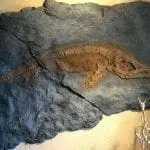[Originaly published as A Universal Family Tree?]
A Brief History of Human Mitochondrial DNA Studies
A long time ago, when I was just a high school student, Allan Wilson and two colleagues published a paper that introduced the world to the idea of the “Mitochondrial Eve.” This was back when you had to gather placentas (no kidding) to harvest enough DNA to sequence and about a decade before Windows95. But it was kind of state of the art at the time, and Wilson’s conclusions stirred up a bit of controversy.
First, he claimed that the mitochondrial DNA of all living humans could trace its ancestry back to a woman who lived about 200,000 years ago. Second, he claimed that that ancestor probably lived in Africa.
Why was this controversial? Some anthropologists (like Milford Wolpoff) had argued that modern humans had much, much deeper roots and that we had no single geographic origin. These results from mitochondrial DNA suggested otherwise.
Given the state of phylogeny reconstruction at the time, there were some inevitable technical critiques of the work, but subsequent refinements in methods for building evolutionary trees and in data collection revealed that Wilson and his colleagues weren’t that far off. Still, there were always those grumblers who reminded us that the mitochondrial DNA was just one very small bit of DNA and that we really don’t know what the rest of the genome looked like.
Now, some creationists seized on this “Mitochondrial Eve,” hastily proclaiming that this was the “Biblical Eve.” Others fell back on the evolution skepticism that typifies most creationist reactions. After all, young-age creationists do not believe that the real Eve lived 200,000 years ago, nor do we think she came from Africa.
For myself, I was intrigued, but I was also being educated throughout all of these developments, and my attitude and assessment were maturing. Let’s call my reaction a guarded enthusiasm. I liked the methods and data, but I wasn’t sure what it all meant.
One reservation was fact that none of these studies sampled fossil hominins that I was sure were human. This was the nineties, a kind of heyday of creationist anthropology, with Lubenow’s Bones of Contention newly published (a formative book for me) and Cuozzo’s studies of Neandertals coming to light. They both affirmed that Neandertals were people too, and Lubenow included Homo erectus in the human family as well.
Limitations of Mitochondrial DNA Research
I figured that any study claiming to trace things back to the biblical Eve must include all of her descendants, not just modern people.
As my education and experience grew, I also began to appreciate that old stick-in-the-mud argument that we need to know more about the rest of the genome before we can make any sure conclusions.
The problem is that variants of a genetic element like mitochondrial DNA could simply be lost by chance from a much larger population, and that process of random loss will be different for different parts of the genome. So the mitochondrial DNA might show a very recent ancestor, but other parts of the genome might be much older.
Over the past twenty years, things have changed a lot.
We now have DNA from some ancient hominins like Neandertals and Denisovans.
The human genome was finished and published, and the sequencing technology continued to develop to allow many genomes to be sequenced.
There are now thousands of human genome sequences available for analysis, including whole genomes of Neandertals and Denisovans.
At the same time, computer power and techniques also improved pretty dramatically. My phone now has more processing power and speed than just about any computer from the 80s when Mitochondrial Eve made her debut, and modern computers used for research are substantially more powerful than my phone.
So, we can finally be about the business of constructing that long-sought genome-wide family tree.
With all that prelude, let’s talk about the latest research.
In February 2022, Science published a new paper by Wohns and colleagues representing a complex family tree of about 3600 human genomes, including ancient DNA samples, Neandertals, and Denisovans. The tree contains nearly 27 million inferred ancestors and about 231 million branches. Even though they expect a lot of error to influence their results, this is still a staggering technical achievement and provides a basis for lots of future improvements.
Their results are familiar:
- The deepest branches separate out Neandertals and Denisovans from modern H. sapiens.
- The next deepest branches separate out African genetic lines from the rest of the world.
- Modern people are grouped into sensible geographic categories, rather than artificial categories caused by systematic sequencing errors.
- Modern people groups are also very closely related, with the exception of the divergent African lineages.
Broadly speaking then, these results are consistent with a “recent” emergence of Homo sapiens with very limited admixture with Neandertals and Denisovans.
In their work, they implemented a very simple method of estimating ancestral locations based on descendant locations (it’s basically an average), and with this method, they located human ancestry across north Africa and the Middle East. The absolute geographic center of their tree is in Sudan. There are plenty of reasons to be skeptical of this result, but I’m intrigued that the geographic center is so far north.
Overall then, these results are mostly consistent with the work of Wilson and colleagues back in the 80s. What might it mean for young-age creationism? Here are a few thoughts:
- I’m glad to see other humans (Neandertals and Denisovans) included in this analysis, but I’m still hoping for more data in the future. What about Homo erectus, which many creationists also affirm as human? What about the lesser-known forms, like Homo naledi in South Africa or Homo floresiensis in southeast Asia? It’s hard to draw firm conclusions if some people are omitted.
- I’m very interested in the northward movement of the last common ancestor of all humans. Based on the way they’ve worked this, that ancestor is likely to be Noah and family rather than Adam and Eve, and so I have an expectation that the center of ancient humanity must be around the old kingdom of Urartu, where the Ark is said to have grounded. Even though there are still lots of reasons to be skeptical, I find that northern location of their last common ancestor to be very suggestive.
- Numerous age estimates from their paper seemed quite discordant with conventional archaeological records. For example, they estimated ancestry in Papua New Guinea to begin around 140,000 years ago, which I think is about three times as old as previous estimates. They also saw ancestry starting in North America at 56,000 years ago, which is also at least three times as old as others have estimated. There are lots of sources of error in these estimates, though, on both sides, and I would expect revisions in both directions. Certainly, evidence from the Americas is pushing back the conventional date of colonization (see here), and it’s very likely that the geographic center of modern peoples is not highly correlated to the geographic location of their ancestors.
- I remain very interested in the estimated ages of these ancestors. I’ve dabbled a little in this, mostly trying to infer mutation rates from a mitochondrial DNA tree that included Neandertals and Denisovans and that was constrained to a 6,000-year history. Those were some spectacularly high mutation rates. I will want to look at these new results more closely.
So there it is. It’s not exactly a “universal” tree, but it’s bigger than anything we’ve had before. It’s also not without errors and drawbacks, which the authors themselves point out, but it’s pretty good technical achievement.







